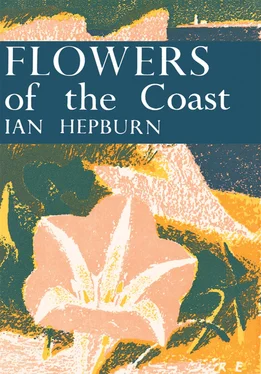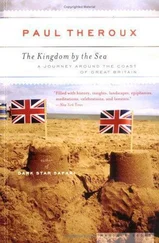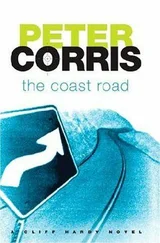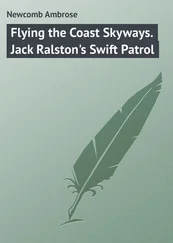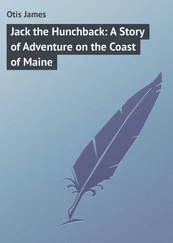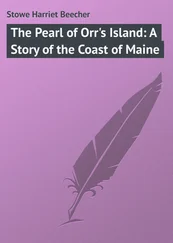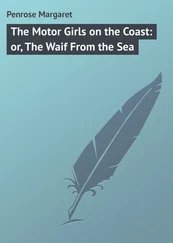Ian Hepburn - Flowers of the Coast
Здесь есть возможность читать онлайн «Ian Hepburn - Flowers of the Coast» — ознакомительный отрывок электронной книги совершенно бесплатно, а после прочтения отрывка купить полную версию. В некоторых случаях можно слушать аудио, скачать через торрент в формате fb2 и присутствует краткое содержание. Жанр: unrecognised, на английском языке. Описание произведения, (предисловие) а так же отзывы посетителей доступны на портале библиотеки ЛибКат.
- Название:Flowers of the Coast
- Автор:
- Жанр:
- Год:неизвестен
- ISBN:нет данных
- Рейтинг книги:4 / 5. Голосов: 1
-
Избранное:Добавить в избранное
- Отзывы:
-
Ваша оценка:
- 80
- 1
- 2
- 3
- 4
- 5
Flowers of the Coast: краткое содержание, описание и аннотация
Предлагаем к чтению аннотацию, описание, краткое содержание или предисловие (зависит от того, что написал сам автор книги «Flowers of the Coast»). Если вы не нашли необходимую информацию о книге — напишите в комментариях, мы постараемся отыскать её.
Flowers of the Coast — читать онлайн ознакомительный отрывок
Ниже представлен текст книги, разбитый по страницам. Система сохранения места последней прочитанной страницы, позволяет с удобством читать онлайн бесплатно книгу «Flowers of the Coast», без необходимости каждый раз заново искать на чём Вы остановились. Поставьте закладку, и сможете в любой момент перейти на страницу, на которой закончили чтение.
Интервал:
Закладка:
Collins New Naturalist Library
24
Flowers of The Coast
Ian Hepburn
Editors: Editors Editors’ Preface Author’s Preface CHAPTER 1 INTRODUCTORY CHAPTER 2 THE PHYSIOGRAPHICAL BACKGROUND CHAPTER 3 SOME ECOLOGICAL CONSIDERATIONS CHAPTER 4 FORM AND HABIT OF COASTAL PLANTS CHAPTER 5 SALT-MARSH VEGETATION CHAPTER 6 STRAND AND FORESHORE VEGETATION CHAPTER 7 SAND-DUNE VEGETATION CHAPTER 8 SHINGLE BEACH VEGETATION CHAPTER 9 VEGETATION OF SPRAY-WASHED ROCKS AND CLIFFS CHAPTER 10 VEGETATION OF CLIFF-TOPS CHAPTER 11 VEGETATION OF BRACKISH WATER CHAPTER 12 THE FLOWERS OF THE COAST Glossary Bibliography Index The New Naturalist Plates Copyright About the Publisher
JOHN GILMOUR, M.A., V.M.H.
SIR JULIAN HUXLEY, M.A., D.Sc., F.R.S.
MARGARET DAVIES, M.A., Ph.D.
KENNETH MELLANBY, C.B.E., Sc.D.
PHOTOGRAPHIC EDITOR:
ERIC HOSKING, F.R.P.S.
The aim of this series is to interest the general reader in the wild life of Britain by recapturing the inquiring spirit of the old naturalists. The Editors believe that the natural pride of the British public in the native fauna and flora, to which must be added concern for their conservation, is best fostered by maintaining a high standard of accuracy combined with clarity of exposition in presenting the results of modern scientific research. The plants and animals are described in relation to their homes and habitats and are portrayed in the full beauty of their natural colours, by the latest methods of colour photography and reproduction.
toPHYLLISwho loves the sea but is sometimes uncertain of her botany
Table of Contents
Cover Page
Title Page Collins New Naturalist Library 24 Flowers of The Coast Ian Hepburn
Editors Editors: Editors Editors’ Preface Author’s Preface CHAPTER 1 INTRODUCTORY CHAPTER 2 THE PHYSIOGRAPHICAL BACKGROUND CHAPTER 3 SOME ECOLOGICAL CONSIDERATIONS CHAPTER 4 FORM AND HABIT OF COASTAL PLANTS CHAPTER 5 SALT-MARSH VEGETATION CHAPTER 6 STRAND AND FORESHORE VEGETATION CHAPTER 7 SAND-DUNE VEGETATION CHAPTER 8 SHINGLE BEACH VEGETATION CHAPTER 9 VEGETATION OF SPRAY-WASHED ROCKS AND CLIFFS CHAPTER 10 VEGETATION OF CLIFF-TOPS CHAPTER 11 VEGETATION OF BRACKISH WATER CHAPTER 12 THE FLOWERS OF THE COAST Glossary Bibliography Index The New Naturalist Plates Copyright About the Publisher JOHN GILMOUR, M.A., V.M.H. SIR JULIAN HUXLEY, M.A., D.Sc., F.R.S. MARGARET DAVIES, M.A., Ph.D. KENNETH MELLANBY, C.B.E., Sc.D. PHOTOGRAPHIC EDITOR: ERIC HOSKING, F.R.P.S. The aim of this series is to interest the general reader in the wild life of Britain by recapturing the inquiring spirit of the old naturalists. The Editors believe that the natural pride of the British public in the native fauna and flora, to which must be added concern for their conservation, is best fostered by maintaining a high standard of accuracy combined with clarity of exposition in presenting the results of modern scientific research. The plants and animals are described in relation to their homes and habitats and are portrayed in the full beauty of their natural colours, by the latest methods of colour photography and reproduction.
Editors’ Preface
Author’s Preface
CHAPTER 1INTRODUCTORY
CHAPTER 2THE PHYSIOGRAPHICAL BACKGROUND
CHAPTER 3SOME ECOLOGICAL CONSIDERATIONS
CHAPTER 4FORM AND HABIT OF COASTAL PLANTS
CHAPTER 5SALT-MARSH VEGETATION
CHAPTER 6STRAND AND FORESHORE VEGETATION
CHAPTER 7SAND-DUNE VEGETATION
CHAPTER 8SHINGLE BEACH VEGETATION
CHAPTER 9VEGETATION OF SPRAY-WASHED ROCKS AND CLIFFS
CHAPTER 10VEGETATION OF CLIFF-TOPS
CHAPTER 11VEGETATION OF BRACKISH WATER
CHAPTER 12THE FLOWERS OF THE COAST
Glossary
Bibliography
Index
The New Naturalist
Plates
Copyright
About the Publisher
EDITORS’ PREFACE

IN ANY civilised country the two types of habitat least altered by man or his domesticated animals are the mountains and the coast. Mountains and Moorlands have already been dealt with in this series by Professor W. H. Pearsall, and, in the present volume, Mr. Ian Hepburn tackles the wild flowers of our coast. Despite the modest disclaimer in his Preface, Mr. Hepburn is particularly well qualified for the task. He is Second Master at Oundle School and one of the leading amateur plant ecologists in the country. He has served on the Council of the British Ecological Society for many years and has published the results of a number of his ecological investigations, including work on the plants of the Northamptonshire limestone and of sea-cliffs. As one would expect, his approach to coastal vegetation is primarily an ecological one, but he has by no means neglected the beauty or botanical interest of the plants themselves, and we feel that he gives in his book a balanced and vivid account of a fascinating subject.
Coastal vegetation has always had a particular attraction for field botanists, and the reasons are not difficult to understand. First, in no other habitat does the flora change so completely in the course of a short walk; one minute there is sand filling our shoes, and marram-grass pricking our legs, and the next a level carpet of sea-lavender lies around us, the dunes are left behind and a grey cliff, with samphire and tree-mallow, lures us farther on. In Britain, probably more than any other country, is this ever-varying quality of the coastline manifest; and the maritime vegetation shows a corresponding richness. Secondly, many of the plants themselves are of great beauty and, in some cases, rarity. The lovely glaucous leaves of the oyster-plant setting off its blue and pink flowers against a Scottish shingle bank, or the autumn squill sprinkling a dry September cliff-turf in Cornwall, spring to the mind—and there are many others. Thirdly, for an ecologist, the coast has a special interest, as nowhere are the succession of vegetation and its dependence on a varying environment so evident, and nowhere have they been more thoroughly investigated. As Mr. Hepburn shows, in an acre or two of salt-marsh are displayed, for those who have eyes to see, most of the more important principles of stable vegetational succession, while on a newly fallen section of cliff, the gradual colonisation of virgin ground can be studied year after year. Lastly, if the environment for the plants is unrivalled in its variety, it is no less so for the humans who study them; a botanist who chooses the British coasts as his hunting ground can enjoy, with a clear conscience, a succession of seaside holidays on what is perhaps the finest coastline in the world.
THE EDITORS
AUTHOR’S PREFACE
IT WAS with considerable diffidence that I, a mere amateur, accepted the invitation of the Editors to write this book. Nor has the subsequent appearance of other books in this series, all written by experts, done anything to dispel this feeling. Nevertheless, I am grateful to them for being so insistent that I should try my hand, for I have greatly enjoyed doing it, and certainly know rather more about the subject than I did when I started!
Ever since I began to take an interest in wild flowers I have always found maritime plants especially attractive. I was lucky enough to go to school within five miles of Blakeney, and first learnt the common seaside plants on the Cley marshes, the Weybourne shingle bank, and sometimes on the historic Blakeney Point itself. Later, I had the good fortune to live for a number of years in north Cornwall, where, in addition to fine stretches of cliffs, excellent sand-dunes and small areas of salt-marsh were within easy reach. Coastal vegetation, therefore, is very much in my blood, and if I have been able, in this book, to convey something of the pleasure I have had in botanising along the coast, I shall be very well satisfied. Now that it is written, my first wish is to get out to the coast once more to start some field-work. Perhaps I may express the hope that others may be similarly stimulated.
Читать дальшеИнтервал:
Закладка:
Похожие книги на «Flowers of the Coast»
Представляем Вашему вниманию похожие книги на «Flowers of the Coast» списком для выбора. Мы отобрали схожую по названию и смыслу литературу в надежде предоставить читателям больше вариантов отыскать новые, интересные, ещё непрочитанные произведения.
Обсуждение, отзывы о книге «Flowers of the Coast» и просто собственные мнения читателей. Оставьте ваши комментарии, напишите, что Вы думаете о произведении, его смысле или главных героях. Укажите что конкретно понравилось, а что нет, и почему Вы так считаете.
